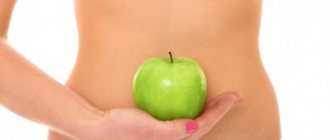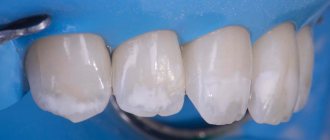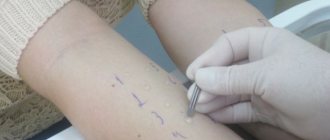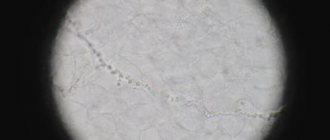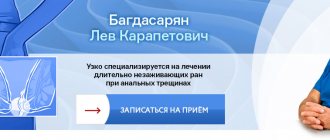Epidemiology
The main carriers of pseudotuberculosis in nature are mouse-like rodents, as well as hares. The pathogen enters the soil and water from the body of rodents. With soil particles on root crops, the pathogen is transferred to storage areas, where it finds optimal conditions for its accumulation. It accumulates intensively on vegetables in “primitive” type vegetable stores with significant fluctuations in temperature and humidity. Transmission of the pathogen to humans occurs either directly through raw vegetables, or the pathogen of pseudotuberculosis enters prepared food through equipment, utensils, utensils, or is contaminated by rodents. The accumulation of the pathogen in ready-made dishes can also occur if the cooking technology is violated or their shelf life is increased. This type of infection is not transmitted from person to person. Infection of people mainly occurs when consuming raw vegetables that have been stored for a long time in vegetable warehouses, or grown in greenhouses, where bacteria accumulate. Transmission factors in most cases are raw salads prepared in violation of the rules for processing vegetables, and most often occurs in organized groups united by a common catering unit.
Pseudotuberculosis and intestinal yersiniosis
Home / Information / Information for patients / Pseudotuberculosis and intestinal yersiniosis
Every year in the Russian Federation, outbreaks of pseudotuberculosis are recorded, mainly in children's educational organizations, and sporadic cases of intestinal yersiniosis.
Pseudotuberculosis and intestinal yersiniosis are two independent acute infectious diseases related to zoonoses with a fecal-oral transmission mechanism, characterized by polymorphism of clinical manifestations with damage to the gastrointestinal tract, skin, musculoskeletal system and other organs. Found everywhere.
Etiology:
— The causative agent of pseudotuberculosis is Y.pseudotuberculosis
— The causative agent of intestinal yersiniosis is Y.enterocolitica.
Yersinia belongs to facultative anaerobes. The optimal temperature for their life activity is (24-28 ºС). They can reproduce at low temperatures (4-10ºС), but accumulation under these conditions is slow.
Yersinia can survive for a long time in the environment: in soil they can exist for more than 4 months, in open water for up to 1 month, in boiled water for up to 1 year. They can survive for a long time in various food products: in milk - up to 18 days, in butter - up to 145 days, on bread and confectionery - from 16 to 24 days. They multiply and persist for a long time on vegetables, especially in the form of salads, stored after cooking at low temperatures. In feces at a temperature (20-24ºС) they survive up to 7 days, in frozen feces - up to 3 months.
Yersinia is sensitive to high temperatures: at 100ºC they die within 1-2 minutes. Direct solar radiation and the acidic reaction of the environment (pH 3.6-4.0) have a detrimental effect on these microbes; Yersinia is sensitive to drying out. In a humid environment at low temperatures (14-18ºС) they survive for a long time. In disinfectant solutions in standard dilutions, Yersinia microbes die within 5-10 minutes.
The natural reservoir of pseudotuberculosis and intestinal yersiniosis are wild small mammals (voles, mice, shrews, gerbils, ground squirrels). Among domestic animals with intestinal yersiniosis, priority is given to pigs; with pseudotuberculosis, small and cattle are of significant importance.
There is a risk of human infection through consumption of food products contaminated with Yersinia, as well as through professional (household) contact with agricultural and domestic animals, birds and environmental objects.
A person with pseudotuberculosis does not pose an epidemiological danger; with intestinal yersiniosis, the patient or carrier in a hospital or family setting is a source of infection for others.
The fecal-oral mechanism of transmission of yersiniosis is realized:
1) By food:
- in case of direct (with raw and thermally poorly processed food products) or indirect (through equipment, equipment or utensils) entry of the pathogen into prepared food;
- in case of secondary accumulation of the pathogen in ready-made dishes (in case of violation of the cooking technology of the latter and an increase in their shelf life);
2) Contact and household (rarely):
- when caring for sick agricultural, domestic or captive animals;
- when cutting animal and poultry meat.
3) By water.
Transmission factors for pseudotuberculosis: Products of plant origin (vegetables, root vegetables, herbs, fruits), less often - water from open reservoirs.
The accumulation of the pathogen on vegetables and root crops with contamination of containers, walls and floors occurs in vegetable stores and warehouses of organized groups and catering establishments, when the temperature and humidity conditions are violated and infected rodents populate. Plant products are subject to infection when stored for storage with an increase in contamination with the pseudotuberculosis microbe in February (winter vegetables), April-May (early vegetables, including greenhouse vegetables), and August-September (summer vegetables).
Plants can become infected with Yersinia during cultivation (in fields, in greenhouses) by contact with soil and by watering from a water source contaminated with the pathogen.
Transmission factors for intestinal yersiniosis: Products of animal origin (dairy products, meat and meat products, poultry products) eaten raw or thermally insufficiently processed or secondary contaminated. The importance of vegetables and fruits as factors of infection transmission is lower than with pseudotuberculosis.
Violations of the sanitary and epidemiological regime in the catering unit that contribute to human infection with Yersinia:
For pseudotuberculosis, this means poor-quality peeling of vegetables, soaking vegetables overnight, lack of repeated rinsing with hot water, and storing prepared salads in the refrigerator.
In case of intestinal yersiniosis - violation of the regime for collecting and processing meat and dairy products, long-term storage of raw products contaminated with the pathogen at low temperatures, insufficient heat treatment, violation of the deadlines for the sale of ready-made dishes, violation of the milk pasteurization regime.
Infection of persons professionally associated with livestock and poultry farming is possible when removing internal organs, cutting animal meat (cutting out the tongue and tonsils, cutting meat from the head) and poultry carcasses, and during the preparation of semi-finished products.
Pseudotuberculosis and intestinal yersiniosis affect all age groups, but the majority of cases occur in children 3-6, 7-14 years old and adolescents 15-17 years old.
The incidence of pseudotuberculosis in children under 1 year of age is associated with the inclusion of vegetables and fruits (juices, purees) in the diet.
For intestinal yersiniosis - artificial feeding, household contact with a patient (carrier).
The clinical picture of pseudotuberculosis and intestinal yersiniosis is characterized by polymorphism, so the identification of individual forms of the disease is conditional and is determined by the leading syndrome. More severe and manifest forms are observed in young children; adults often experience mild or asymptomatic forms of the disease.
Differential diagnosis for yersiniosis with a wide range of infectious, parasitic and non-infectious diseases:
Scarlet fever, measles, rubella, enterovirus infection, leptospirosis, viral hepatitis, trichinosis, typhoid fever, acute intestinal infections of various etiologies (salmonellosis, ampylobacteriosis, shigellosis, etc.), infectious mononucleosis, brucellosis, tularemia, sepsis, rheumatism, hemorrhagic fevers, acute appendicitis, ARVI, etc.
Laboratory diagnostics:
Confirmation of the diagnosis of pseudotuberculosis and intestinal yersiniosis is carried out on the basis of the clinical picture based on the results of:
— bacteriological (isolation of Y. pseudotuberculosis or Y. enterocolitica culture);
— serological (increase in antibody titer in paired sera);
— immunological (detection of antibodies of classes A, M, G);
— molecular genetic (detection of bacterial DNA) methods, taking into account epidemiological history.
Rules for discharge of ill patients and clinical observation:
Discharge is carried out after complete clinical recovery and normalization of all indicators of the functional state of those who have recovered from the disease, without conducting control laboratory tests for pseudotuberculosis and intestinal yersiniosis, according to the decision of an infectious disease specialist.
Convalescent patients are monitored at a clinic. Monitoring of ill children is carried out by local pediatricians, and for adults by local therapists. Dispensary observation is carried out for 1 month after discharge from the hospital for uncomplicated forms, for a protracted course - for at least 3 months. Admission to work for staff of children's institutions and children to attend children's organized groups is carried out on the basis of a certificate of recovery.
Contact persons are under medical observation for 18 days.
Clinical manifestations of pseudotuberculosis
The clinical picture of this disease is so diverse that it can occur under the guise of such infections as ARVI, scarlet fever, measles, viral hepatitis, acute intestinal infections, rheumatism (if the articular form), allergic dermatitis. The most difficult thing is to deal with atypical or erased forms, because due to specific treatment not prescribed in time, recovery may be delayed, or the disease may become chronic. In most cases (95%) the disease begins acutely. Children complain of weakness and headache, muscle and joint pain. Body temperature reaches febrile levels - 38 C - 39 C, which is often accompanied by chills. Catarrhal syndrome is also characteristic: coughing, runny nose, redness of the mucous membrane of the oropharynx (mask of ARVI or FLU). Also, changes in the gastrointestinal tract are among the first to be recorded: children have decreased appetite, nausea, less often single vomiting, 2-3 loose stools, the tongue is covered with a thick white coating.
Abdominal pain is also typical, especially in the right iliac region. Considering the increase in temperature, acute appendicitis can be suspected, and then such patients are admitted to a surgical hospital, where they undergo surgical treatment, and when examining the removed appendix, inflammatory changes are revealed. Also, in most patients the size of the liver increases, but signs of hepatitis are detected only in isolated cases. In the first three days of the disease, a rash appears, redness of the skin of the face and neck is noted - the “hood” symptom, swelling and redness of the feet and palms - the “gloves” and “socks” symptom. In some patients, the rash may be measles-like and accompanied by itching. This rash is recorded more often in young children and with a history of allergic reactions. The rash is located around the joints, on the anterolateral surfaces of the body, legs, and less often in the upper chest and neck. After the rash subsides, fine lamellar peeling of the skin of the fingers and toes appears. As with all infectious diseases, there are 3 main forms: mild, moderate and severe. Up to 25% of cases have a wave-like course of the disease with exacerbations and relapses. Chronic forms of pseudotuberculosis in children are extremely rare. As a rule, against the background of immunodeficiency states.
Forms of the disease
In Russia, the Yushchuk classification of pseudotuberculosis has been adopted.
Clinical forms:
- abdominal - with damage to the liver, intestines;
- mixed - proceeds like scarlet fever or sepsis;
- secondary focal - the skin and joints are affected.
By severity:
- light;
- moderate severity;
- heavy.
If the disease lasts up to 3 months, it is called acute. If it lasts more than 6 months, it is a chronic form.
Treatment of tuberculosis
Treatment of tuberculosis is always carried out comprehensively, taking into account the age of the child, the severity and period of the disease, and the leading syndrome. The diet should be complete and age appropriate. And pathogenetic therapy is aimed at eliminating changes in organs and systems caused by the disease. Therefore, the question of the duration of treatment, courses of a/b therapy, and the use of immunomodulators always remains within the competence of the doctor. And among the preventive measures today, the only and most important remains undoubtedly: strict adherence to a set of sanitary and hygienic storage standards, processing technology and deadlines for the sale of finished products, especially vegetable ones; rodent control. And at home - thoroughly washing vegetables, herbs and fruits, removing rotten and slimy areas.
Prognosis and complications
Favorable for mild to moderate disease, complete recovery occurs. In severe cases, death and complications may develop. No special rehabilitation is required. After recovery, visiting local sanatoriums is recommended.
Complications develop rarely:
- toxic shock;
- intestinal obstruction;
- meningitis;
- renal failure;
- myocarditis;
- pneumonia;
- Quincke's edema;
- arthritis.
The lack of antibacterial treatment is dangerous because relapses and exacerbations of the disease develop more often, and the likelihood of pseudotuberculosis becoming chronic is high.
Prevention of pseudotuberculosis
Prevention of pseudotuberculosis, like many other infectious diseases, consists of following basic rules to prevent infection by the causative agents of these infections. To prevent pseudotuberculosis when eating raw vegetables and root vegetables, they should be thoroughly processed. It is necessary to rinse the vegetables in warm water, remove any remaining soil with a knife and cut out all rotten, slimy and softened areas, then rinse again with water and scald with boiling water. To cut raw vegetables you need to have special equipment.
To prepare salads from raw vegetables, it is allowed to use vegetables from the previous year's harvest only until March. It is recommended to soak raw vegetables and herbs intended for preparing cold appetizers without subsequent heat treatment in a 3% solution of acetic acid or a 10% solution of table salt for 10 minutes, followed by rinsing with running water.
Diagnostics
It is quite difficult to identify pseudotuberculosis by symptoms if this is an isolated case of the disease. Similar symptoms are observed with scarlet fever, appendicitis, and pancreatitis. If an outbreak of disease occurs, clinical diagnosis is not difficult. Confirm the diagnosis with laboratory tests. Ultrasound, ECG and other studies are prescribed to determine the extent of damage to internal organs.
Mandatory laboratory tests for pseudotuberculosis:
- complete blood count - increase in leukocytes, monocytes, eosinophils, ESR;
- biochemical blood test - increase in liver enzymes ALT and AST, bilirubin;
- feces for pseudotuberculosis - detection of bacteria or their antigens;
- blood for antibodies to pseudotuberculosis.
To confirm the diagnosis, the bacteriological method is used predominantly. Bacteria are found in feces, urine, blood, and nasopharyngeal mucus. An early diagnostic method is the detection of bacterial antigens in biological material from a patient. Blood tests for antibodies are carried out twice with an interval of 10-14 days.
Diagnosis, treatment, prevention
To diagnose pseudotuberculosis, two methods are used: bacteriological and serological. Materials for bacteriological analysis are: feces, blood, cerebrospinal fluid, as well as examination of lymph nodes and the appendix.
To determine pseudotuberculosis antigens in stool and other material, enzyme-linked immunosorbent assays are also used.
RIGA with immunoglobulin diagnostic kits is used as express diagnostics.
Treatment and prevention of pseudotuberculosis
To treat pseudotuberculosis, antibiotics, sulfonamides and chemotherapy are used. The duration of treatment depends on the form of the disease: for a localized form, 7-10 days, for a generalized form, at least 12-14 days. Rehydration preparations in the form of solutions can be used - glucose-electrolyte and polyionic.
Sometimes, if indicated, surgical treatment is performed.
Prevention of pseudotuberculosis consists of monitoring where vegetables are stored, controlling rodents, monitoring transportation, preparation of food products, as well as prohibiting the use of certain vegetables, such as cabbage and carrots, in their raw form, that is, without heat treatment, etc. . It is also worth constantly monitoring the water supply and, if necessary, carrying out sanitary supervision. There is no vaccine against pseudotuberculosis.
Pseudotuberculosis or Far Eastern scarlet-like fever is a rather serious disease, but with timely consultation with a doctor and timely treatment, recovery will be easier. Self-medication is unacceptable! Take care of yourself and your loved ones and be healthy!
